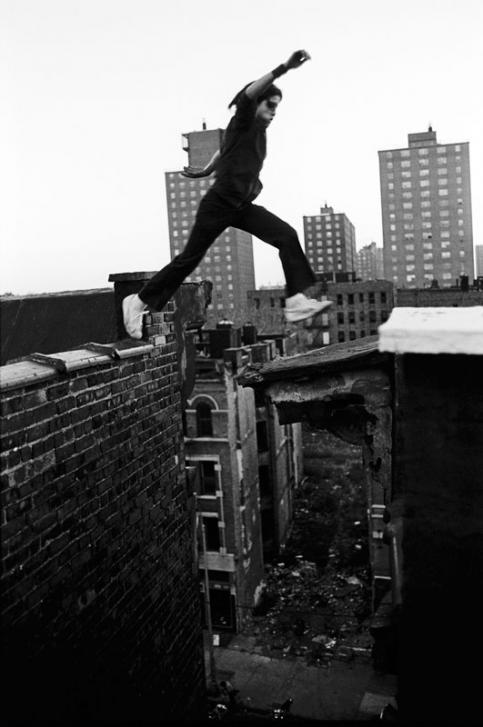For the first time ever in Europe, the American photographer Stephen Shames presents a show of original prints and archival material retracing his work on American society in the sixties and seventies. His photographs, from the daily lives of gangs in the Bronx to the radical freedom movement of the Black Panthers, go way beyond simple documentary illustration. They were taken from the perspective of an insider and paint a markedly contrasted portrait of America.
Exhibition produced with support from the Portrait(s) Festival, Vichy, the Maison de la Photographie Robert Doisneau, Gentilly and The Steven Kasher Gallery, New York
with the support of the Ministry of culture – DRAC Bourgogne Franche-Comté, the Friends of the Nicéphore Niépce museum, et Canson.
Curators : Francois Cheval, Audrey Hoareau and Emmanuelle Vieillard
In the nineteen sixties, America discovered the flipside of abundance. Prosperity did not happen for everyone. Numerous were those left by the wayside. Behind the facade of the “American Dream”, Stephen Shames, a participant and observer, recorded the tectonic shifts of a society under pressure, much like a Geiger counter. Shames inventoried them with patience and perseverance: he spent seven years following the Black Panthers, twenty years covering the convulsions and daily violence in the Bronx and in Brooklyn. He recorded the tiniest of traces of the resistance of the people to all forms of oppression.
In an understated way, far from the suffocating epic sweep, Stephen Shames claimed his place in the honour roll of the documentary photography tradition. Perhaps it will be said that his images proceed from the reforming tradition of American photography initiated by Jacob Riis and continued by Lewis Hine. But Shames, in the only real tradition he adhered to, the Photo League, had nothing but disdain for the picturesque and the moral. The real truth was systematically confiscated and masked by censorship, the spectacular or a spiritual conception of the medium. Up against this, Shames was merciless with liars and benevolent with the simple and the victims. More of an activist than a militant, he decided to make photography a form of political commitment and the combat of the Black Panthers was to be his first battle.
It is most probably his friendship with the photographer Bobby Seale that lies at the origin of a body of work that is unique in the freedom of its tone and its unicity. The founder of the Black Panthers introduced Stephen Shames to the main leaders of the movement. From then on, the photographer was in regular contact with Kathleen and Eldridge Cleaver, June and David Hilliard and Huey Newton. This proximity afforded him not only access to all levels of the organisation but also gave him the keys to understanding the movement. He spent seven years taking part in the struggle, relating every move of the main players in the American revolutionary avant-garde. A world opened up to him. He had a front seat view of the reality of the African-American minority, its execrable living conditions and the daily racism it encountered, bolstered by a discriminatory system.
The photographs of Stephen Shames depict a country that is light years from the “pioneering ideal”. For a nation that loved to present itself as free from all inequality, the multiplicity of similar life stories to be told were of a startling banality so similar were the tales of woe. Stephen Shames avoids all interference, never gives in to pathos. He seeks only to exalt the dignity of those communities excluded from the table with an unexpurgated version of the situation. In his series entitled “Bronx boys ”, he records the brutality of the time, the fights, the shootings, the arrests and the drug deals, the direct consequence of which was death or prison for a certain number of young men from the Bronx. However, he also depicts the joy of the community, the love, the families, the fatherhood… In “Outside the dream ” or more prosaically “Child poverty in America”, Stephen Shames bears witness to the poverty that at that time touched children most of all, in the United States in the eighties. The photographer set this body of work in the tradition of the photographic commissions of the “Farm Security Administration”. For him, photography was a means to reform inequality.
The different series by Stephen Shames presented as part of this retrospective highlight, most of all, men in movement, men acting. These photographs shine with a beauty that enters deeply into the viewer’s mind; the nobility of the Black Panthers, the dramatic density of the poverty-stricken children, the adolescents in prison, etc.
Their lives are vivid, at times on fire, like the America of the time. Thanks to the generous insistence of certain photographers, Stephen Shames included, it is still conceivable to think that photography can give us that rarest of feelings: attentive seriousness.
From a text by
François Cheval










